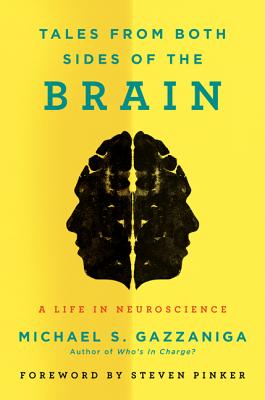But this strategy can become a weapon used against young women in the hands of peers who circulate rumors and innuendo--elevating age-old slut-shaming to deadly levels, with suicide among bullied teenage girls becoming increasingly common. Now, Leora Tanenbaum--senior writer and editor for the Planned Parenthood Federation of America, author of the groundbreaking work Slut! , and the writer who coined the term slut-bashing--revisits her influential work on sexual stereotyping to offer fresh insight into the digital and face-to-face worlds contemporary young women inhabit. She shares her new research, involving the experiences of a wide range of teenage girls and young women from a variety of backgrounds as well as parents, educators, and academics. Tanenbaum analyzes the coping mechanisms young women currently use and points them in a new direction to eradicate slut-shaming for good.
Now ninety-two, Mrs. Anna Madrigal has seemingly found peace with her "logical family" in San Francisco. Some members of Anna's family are bound for the otherworldly landscape of Burning Man, the art community in Nevada where sixty thousand revelers gather to construct a city designed to last only one week. Anna herself has another destination in mind. With her former tenant Brian Hawkins and his beat-up RV, she journeys into the dusty troubled heart of her Depression childhood to unearth a lifetime of secrets and dreams and attend to unfinished business she has long avoided.
Michael S. Gazzaniga, "the father of cognitive neuroscience," gives us an exciting behind-the-scenes look at his seminal work on the enigmatic coupling of the right and left brain
In the mid-twentieth century, Michael S. Gazzaniga made one of the great discoveries in the history of neuroscience: split-brain theory, the notion that the right and left hemispheres of the brain can act independently from each other and have different strengths.
In Tales from Both Sides of the Brain, Gazzaniga tells the story of his passionate, entrepreneurial life in science and his decades-long journey to understand how the separate spheres of our brains communicate and miscommunicate their separate agendas. From his time as an ambitious undergraduate at Dartmouth, as a member of its now famed "Animal House" fraternity, and his life as a diligent graduate student in California to the first experiments he conducted in his own lab; from meeting his first split-brain patients to his collaboration with esteemed intellectuals across disciplines, Gazzaniga recounts the trajectory of his discoveries. In his engaging and accessible style, he paints a vivid portrait not only of his discovery of split-brain theory, but also of his comrades in arms—the many patients, friends, and family members who have accompanied him on this wild ride of intellectual discovery.
By turns humorous and moving, Tales from Both Sides of the Brain uses an extraordinary discovery about the nature of human consciousness to tell an enthralling story of how science gets done.
 Resonant of Elizabeth Gilbert's The Signature of All Things and Tracy Chevalier's Remarkable Creatures, Girl Runner is an unforgettable, beautifully written novel that celebrates a woman born to reach beyond the limitations of her time.
Resonant of Elizabeth Gilbert's The Signature of All Things and Tracy Chevalier's Remarkable Creatures, Girl Runner is an unforgettable, beautifully written novel that celebrates a woman born to reach beyond the limitations of her time.As a young runner, Aganetha Smart defied everyone's expectations to win a gold medal for Canada in the 1928 Olympics. It was a revolutionary victory, because this was the first Games in which women could compete in track events--and they did so despite opposition. But now Aganetha Smart is in a nursing home, and nobody realizes that the frail centenarian was once a bold pioneer.
When two young strangers appear asking to interview Aganetha for their film about female athletes, she readily agrees. Despite her frailty, she yearns for adventure and escape. And though her achievement may have been forgotten by history, her memories of chasing gold in Amsterdam remain sharp. But that triumph is only one thread in the rich tapestry of her life. Her remarkable story is colored by tragedy as well as joy, and in Girl Runner Carrie Snyder pulls back the layers of time to reveal how Aganetha's amazing athleticism helped her escape from a family burdened by secrets and sorrow.
However, as much as Aganetha tries, she cannot outrun her past or the social conventions of her time. As the pieces of her life take shape, it becomes clear that these filmmakers may not be who they seem. . . .
The award-winning author of Voice of America paints a vivid, fully imagined portrait of an extraordinary African family and the house that holds them together.
A powerful tale of family and community, This House Is Not for Sale brings to life an African neighborhood and one remarkable house, seen through the eyes of a young member of the household. The house lies in a town seemingly lost in time, full of colorful, larger-than-life characters; at the narrative's heart are Grandpa, the family patriarch whose occasional cruelty is balanced by his willingness to open his doors to those in need, and the house itself, which becomes a character in its own right and takes on the scale of legend.
From the decades-long rivalry between owners of two competing convenience stores to the man who convinces his neighbors to give up their earthly possessions to prepare for the end of the world, Osondu's story captures a place beyond the reach of the outside world, full of superstitions and myths that sustain its people.
Osondu's prose has the lightness and magic of fable, but his themes--poverty, disease, the arrival of civilization in an isolated community--are timeless and profound. At once full of joyful energy and quiet heartbreak, This House Is Not for Sale is an utterly original novel from a master storyteller.
A dark and devious literary suspense novel about a random encounter, sex, and a conversation that quickly turns to murder--a modern reimagining of Patricia Highsmith's classic Strangers on a Train--from the author of the acclaimed The Girl with a Clock for a Heart
On a late flight from London to Boston, Ted Severson meets the stunning and mysterious Lily Kintner. Over one too many martinis, the two strangers play a game, one in which they begin revealing more and more intimate details about themselves. Ted talks about his wife, Miranda--how his marriage has gone stale, how a week ago he caught her in a serious betrayal. . . . Maybe they were a mismatch from the start, he the rich businessman, she the beautiful artist. But what begins as playful banter between Ted and Lily takes a swift turn when Ted claims, half-seriously, that he would like to kill his wife for what she's done. Then Lily surprises him by saying that she'd like to help. After all, everyone dies, what difference does it make if a few bad apples get pushed along a little sooner than life intended?
Back in Boston, Ted and Lily forge an unusual bond and talk about the ways Ted might get out of his marriage. But Lily has her own dark history she's not sharing with Ted, a legacy of murder that stems from childhood. And Ted is keeping something from Lily as well--so as they move their plan forward, his motivation becomes less about getting Miranda out of his life and more about getting Lily into it. But as Ted begins to fall in love with Lily, he grows anxious about any unseen holes in their scheme that could give them away. And suddenly the two are pulled into a very lethal game of cat and mouse, one in which there may be more than one loser and more than one of them left dead when it's all over.





No comments:
Post a Comment